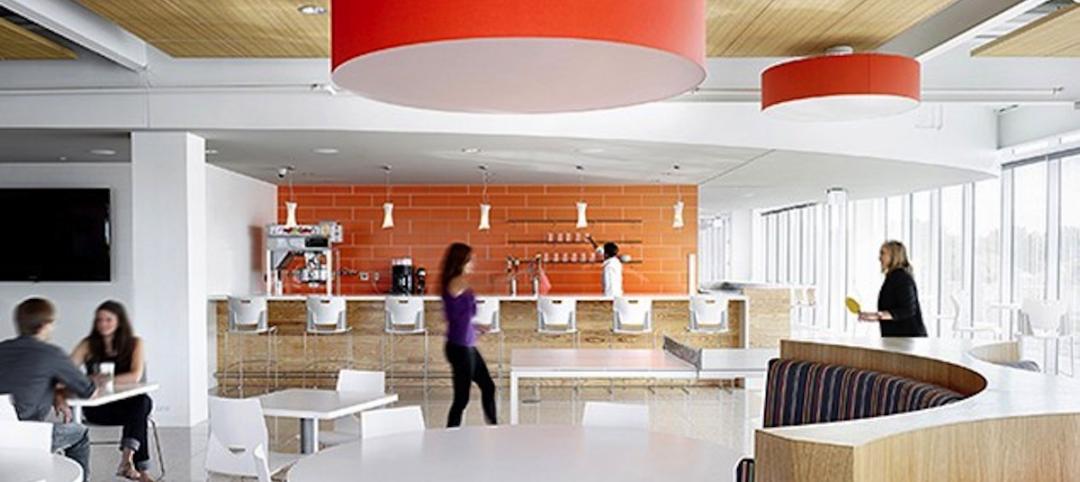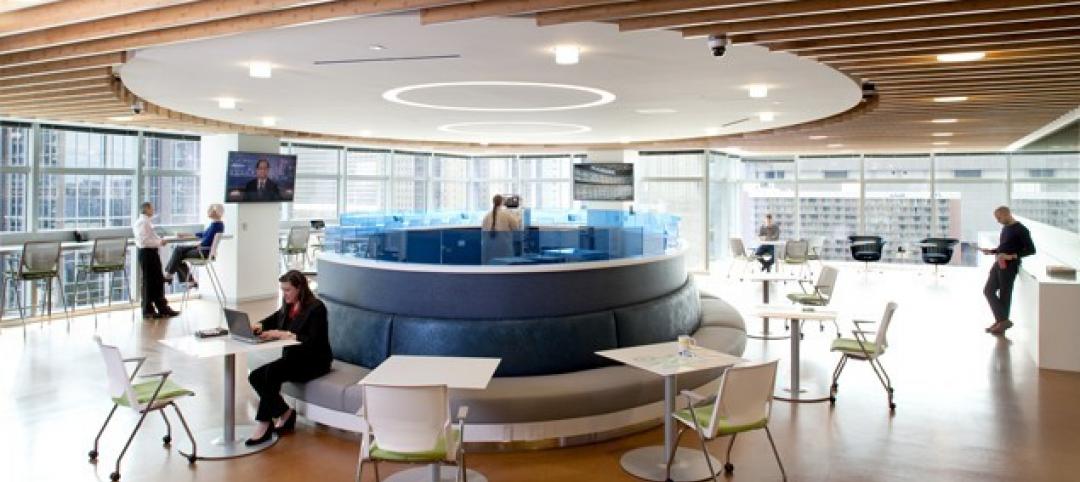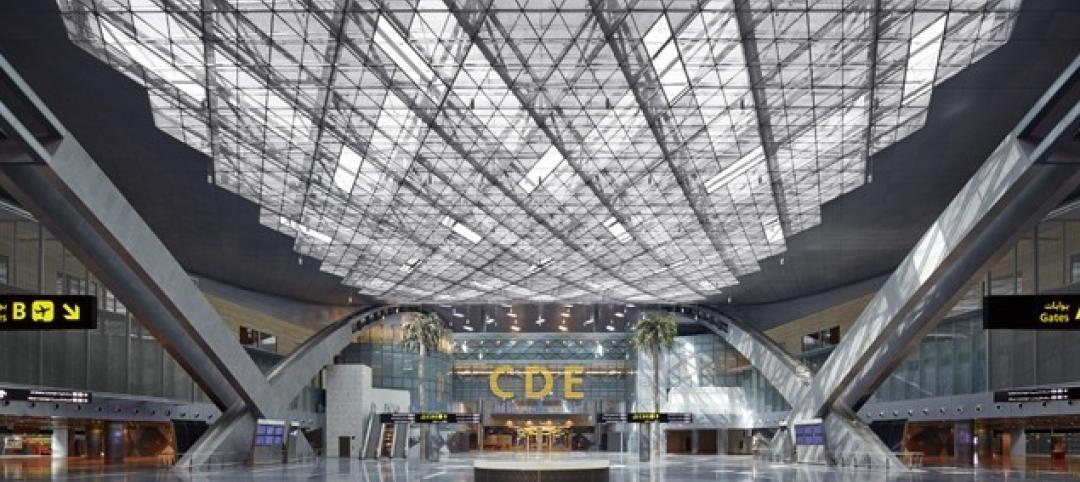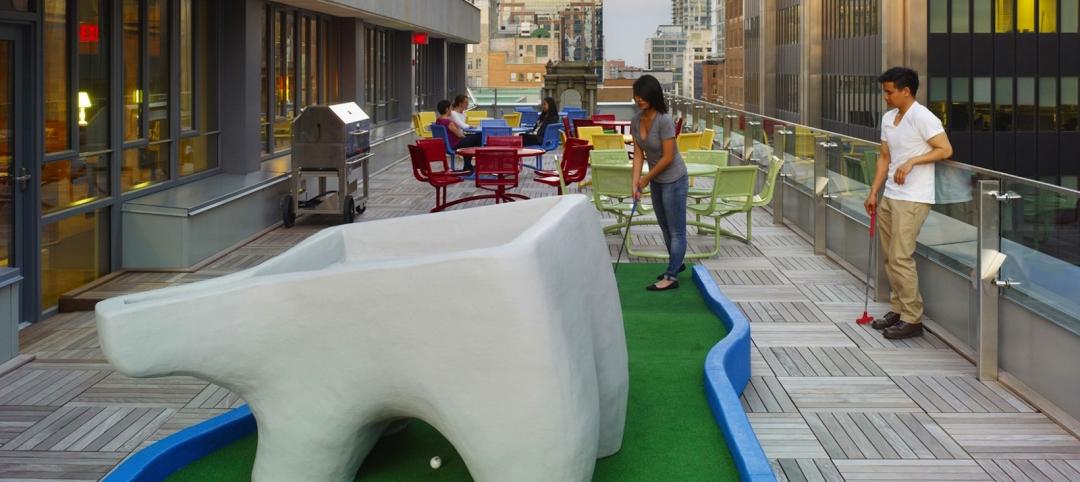Thanks to Paul Woolford, AIA, IIDA, LEED AP BD+C, design director in HOK’s San Francisco office, for this post describing the design of the new National Oceanic at Atmospheric Administration Pacific Regional Center in Pearl Harbor, Hawaii. Scheduled to open in December, this will be one of the country’s most environmentally innovative national historic landmarks.
Our National Oceanic and Atmospheric Administration Pacific Regional Center project is in Honolulu on Oahu’s Ford Island, where the Pearl Harbor attacks occurred.
When it opens later this year, all the administrative functions that NOAA requires to monitor the weather across the Pacific Ocean will be headquartered here. The facility includes offices and labs, a tsunami warning center, the national marine sanctuaries, national monuments under the sea and state parks.
The project is renovating and adapting two giant World War II-era aircraft hangars and constructing a new building between them on a national historic landmark site. The hangars were designed by Albert Kahn and built for the war effort.
To inspire the design, we looked to the mission of the NOAA, which is responsible for monitoring climate, weather, oceans and coasts. This led to design ideas featuring air, light and water.
We repurposed and restored the hangars with a design that treats them as a giant shed, or shell, that is three stories tall, 700 feet long, 250 feet wide and open inside. A simple glass-and-steel pavilion unites these two historic structures and mediates the open space between them. The new architecture is distinct from the historic buildings while providing a quiet complement.
Inside the shed is a 350,000-square-foot government office and research campus. It has a central quadrangle and interior courtyards that allow us to drive daylight and ventilation deep into the building. The physically occupied space is stepped up in the middle of the structure so that it appears to be hanging in the rafters.
Read the full post at Life at HOK.
 About the Author: John Gilmore brings the story of HOK to life for the world, literally. As a senior writer based in St. Louis, his words shine an intelligent light on the people, projects and experiences of the firm on the web, in print and in speeches given all over the globe. More posts by John Gilmore.
About the Author: John Gilmore brings the story of HOK to life for the world, literally. As a senior writer based in St. Louis, his words shine an intelligent light on the people, projects and experiences of the firm on the web, in print and in speeches given all over the globe. More posts by John Gilmore.
More from Author
Life at HOK | Apr 21, 2015
How to create an 'emotionally intelligent' workplace
Emotional intelligence is the leading predictor of performance in the workplace and the strongest driver of leadership and personal excellence.
Life at HOK | Feb 6, 2015
6 factors steering workplace design at financial services firms
Grossly underutilized space and a lack of a mobility strategy are among the trends identified by HOK based on its research of 11 top-tier financial services firms.
Life at HOK | Jan 6, 2015
Airports apply technology to maximize hospitality
Technology is transforming the guest experience and enabling designers to reimagine a new hospitality-oriented destination airport terminal.
Life at HOK | Dec 28, 2014
The future of airport terminal design: destination status, five-star amenities, stress-free travel
Taking a cue from the hospitality industry, airport executives are seeking to make their facilities feel more like destinations, writes HOK's Richard Gammon.
Life at HOK | Nov 17, 2014
Hospitality at the workplace: 5 ways hotels are transforming the office
During the past five years, the worlds of hospitality and corporate real estate have undergone an incredible transformation. The traditional approach toward real estate asset management has shifted to a focus on offerings that accommodate mobility, changing demographics, and technology, writes HOK's Eva Garza.
Life at HOK | Oct 13, 2014
The mindful workplace: How employees can manage stress at the office
I have spent the last several months writing about healthy workplaces. My research lately has focused on stress—how we get stressed and ways to manage it through meditation and other mindful practices, writes HOK's Leigh Stringer.
Life at HOK | Sep 9, 2014
Using Facebook to transform workplace design
As part of our ongoing studies of how building design influences human behavior in today’s social media-driven world, HOK’s workplace strategists had an idea: Leverage the power of social media to collect data about how people feel about their workplaces and the type of spaces they need to succeed.
Life at HOK | Aug 16, 2014
The science of learning: Designing the STEM learning facilities of the future
New technology and changing pedagogies are influencing how to best teach a generation of learners who have never known a world without smartphones or tablets, writes HOK's Kimberly Robidoux.
Life at HOK | Aug 5, 2014
Will driverless cars kill the parking structure?
A report from Deloitte highlighted how driverless cars could dramatically alter car ownership in the future, pushing the pendulum from ownership to rentals and ride sharing.
Life at HOK | May 19, 2014
What can architects learn from nature’s 3.8 billion years of experience?
In a new report, HOK and Biomimicry 3.8 partnered to study how lessons from the temperate broadleaf forest biome, which houses many of the world’s largest population centers, can inform the design of the built environment.
















